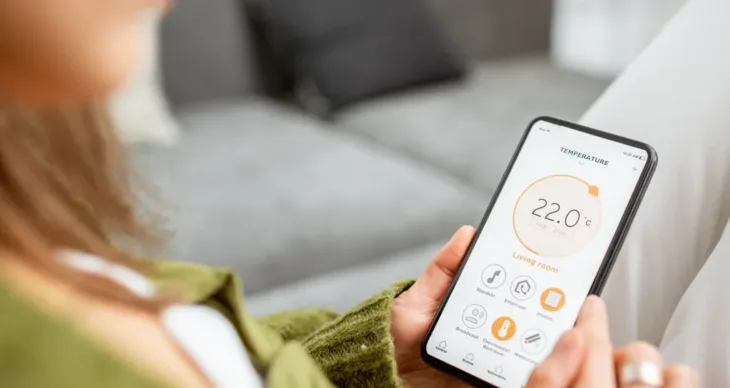Finding the right home automation system for you can be tricky, especially if you are just getting started in the world of hubs. To provide useful alternatives, we added this final category of special mentions.
Consider these three alternatives to the ones mentioned in previous slides and discover unique, interesting features worth a second look: Hubitat Elevation, Abode Iota and Yonomi.
Hubitat Elevation: a local solution for tech-savy users
Do you have sensitive data that needs protection or worry about having an online home automation system? Hubitat may just be the right choice for you. Yes, you need an online account to use it, but once you set up the account, your devices connect directly to your Hubitat and processing is done exclusively from your home network.
It’s not an online service, so if you have internet problems, your system will still work. Hubitat is both a Zigbee and a Z-Wave hub, which means they can connect to a large number of products, including Lutron, as well as other devices that do rely on the web, such as Alexa, Google Nest, Rachio and Life360. It also supports IFTTT services.
The biggest issue with Hubitat is its configuration. It’s done via a web browser as opposed to an app, as hubs are most commonly set up, and it isn’t really user-friendly but best handled by the more tech-savvy users. If you are patient it will work perfectly. However, it doesn’t offer a lot of documentation, so you might need to resort to YouTube tutorials, of Hubitat’s message boards, where you can find the answers to most of your questions.
Hubitat is more expensive than SmartThings but it’s still cheaper than many other smart home systems in the market.
Abode Iota: best security budget hub
Abode offers two versions of its home automation system: Iota, available in the U.S. and Gateway, available only in the UK. It is a smart security system first, a smart hub second. It integrates with Apple HomeKit as well as Alexa, Alexa Guard and can even trigger Alexa Routines with the sensors.
You can connect with a wide variety of Zigbee and Z-Wave devices, as well as Google nest, Ecobee, Lifx, Philips Hue, SimpliSafe, Blue by ADT and 2nd-gen Ring Alarm.
Additionally, it has a range of 1,000 feet, which is a distance much more extensive than many other hubs in the market, so the sensors and hubs will have a reliable connection without having to spend on Wi-Fi extenders.
Iota’s home automation is small, sleek, slim and has a built-in camera with a motion sensor and can work with Wi-Fi. It’s very easy to install and set up, you simply have to download the app, sign up, enter the activation key in the device as well as the key fob and contact window sensor included. Mounting is also very easy since the sensors have velcro mounts and double-sided tape. The app gives you tips on where to place them.
Abode has dozens of different devices you can purchase as well as several seasonal sales you can take advantage, to fortify security at home, including glass break sensors (acoustic and vibrations), smoke alarm monitors, a panic button, a system status indicator and more, all of which are very easy to install.
You can use the system for free or hire an Abode plan and enjoy additional features such as geofencing to arm and disarm the home automation system as you arrive or leave your home, the activity timeline, professional monitoring, 30-day video storage and automations. Plans cost between $60 and $200 per year.
Yonomi: a free, software-only solution
If you are looking for a simple hub solution, with a setup process that doesn’t take up much of your time, Yonomi could be it. You can get your smart home devices to work together easily and the app is available for both iOS and Android for free!
It is compatible with all the big tech products such as Alexa, Google Assistant, Sonos, Philips Hue, Ecobee, Lifx, Logitech, TP-Link, Belkin We-Mo, Netatmo and GE.
You can create routines based on the time of day, the location of your smart devices and use voice automation through Google or Alexa. It also supports IFTTT and it’s compatible with Apple Homekit as well.
Once your app starts working, it will automatically show your devices and help you navigate the setup process. The app scans your devices or “Things”, some will automatically connect while others will need you to sign into their specific accounts. If you don’t know which Routines (also known as scenes in other hubs), tap the “Ideas” lightbulb and the app will suggest routines for you.
By Admin –
